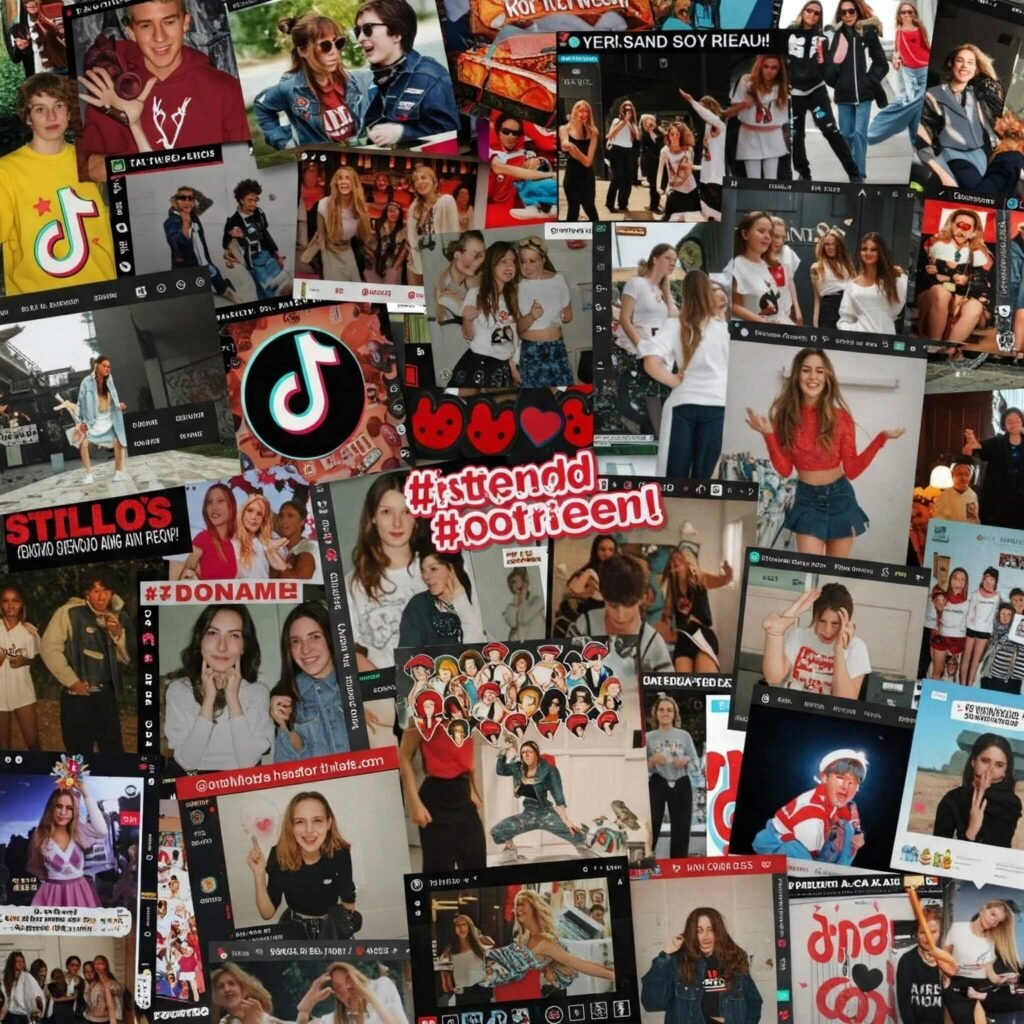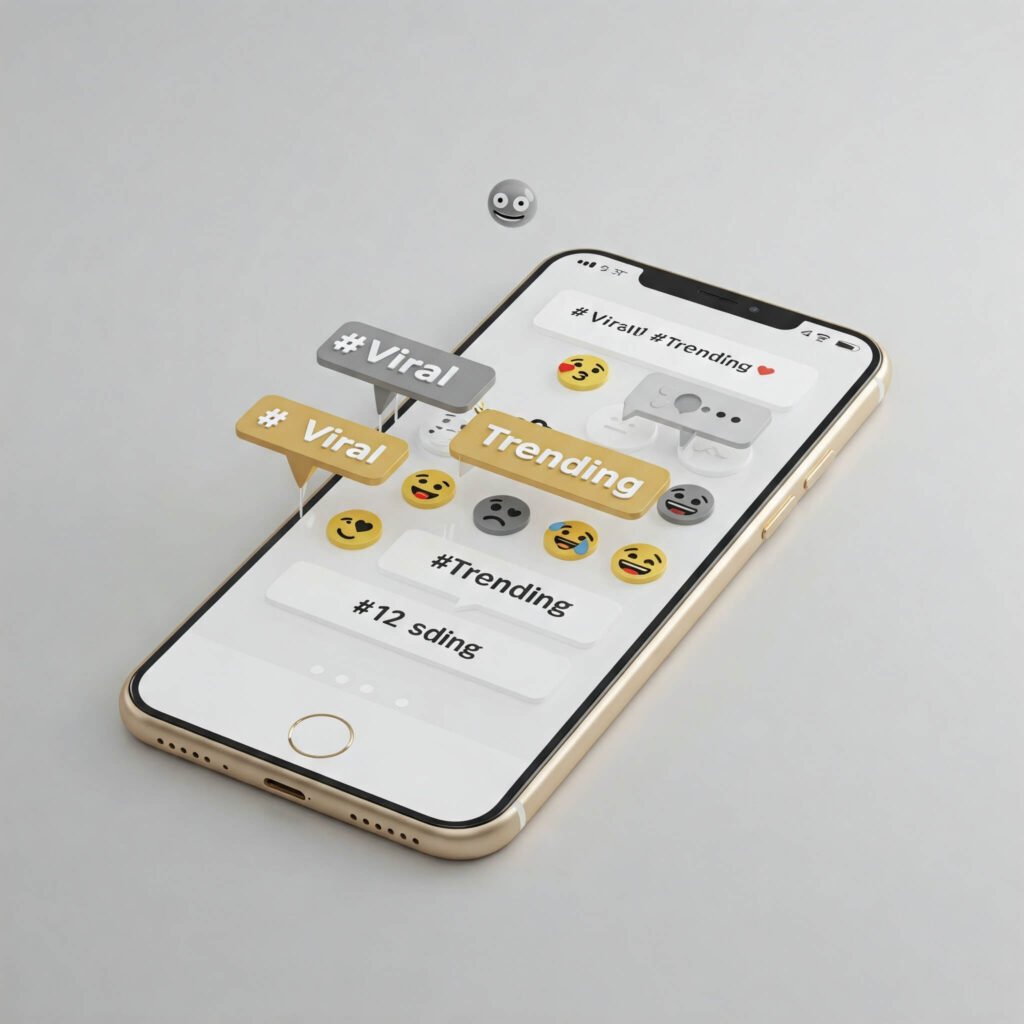So I was waiting for the R train the other day (it was, of course, running late—because why wouldn’t it), and this kid next to me is blasting some TikTok sound on repeat. Like the same 10-second loop, over and over. And instead of being annoyed—well okay, I was a little annoyed—I caught myself humming it later that night while brushing my teeth. That’s when it hit me: viral trends aren’t just little blips on the internet anymore. They’re basically rewriting how we live.
Like, seriously—think about it. The impact of viral trends on culture and media is everywhere. Songs don’t get famous because of the radio anymore, they get famous because someone danced in a Target aisle. News doesn’t break first on TV—it’s Twitter (sorry, “X”) or Instagram, usually in meme form. And half the time I learn about new slang words from TikTok comments and then embarrass myself by trying them out in front of my kids.
Viral Trends Aren’t Just Online—They Sneak Into Real Life

Back in 8th grade, I wore two different shoes to school by accident. Not as a fashion statement. Just Monday brain. Everyone laughed, and it was like, okay, small embarrassment, we move on. But now? That little mistake could’ve been a TikTok trend. Someone would’ve filmed it, slapped a caption on it—“POV: It’s Monday and your brain forgot how shoes work”—and boom, I’d be a meme.
That’s the thing: viral trends blur the line between the internet and real life. You’re at the grocery store and suddenly three teenagers are filming themselves doing a dance in front of the frozen peas. It feels awkward for five seconds and then, two weeks later, your cousin in Texas sends you the same dance on WhatsApp like, “Have you seen this?!” Yeah, I saw it. I walked into it.
The Media Doesn’t Even Pretend to Be in Control Anymore
Remember when TV networks used to set the agenda? Like, “Here are the shows, here’s the news, this is what everyone will be talking about”? That’s over. The media now follows trends instead of making them.
Example: that corn kid. You know the one. “It’s corn!” That interview was just some small clip, but TikTok grabbed it, remixed it, and suddenly it was on Jimmy Fallon. Then it became a charity thing. Then it was commercials. That’s the playbook now: media outlets jump on whatever’s already viral and pretend like they discovered it.
It’s kinda funny but also kinda sad? Because it means the gatekeepers lost the keys. Now a 12-year-old with iMovie can hijack the cultural conversation faster than CNN.
Trends Shape Culture Faster Than Culture Shapes Trends
Here’s something wild: viral trends don’t just reflect culture anymore. They drive it.

Think about slang. “Rizz”? Came from Twitch/YouTube. “It’s giving…”? TikTok. The way people caption stuff with “POV”? Straight from internet memes. My daughter actually said “mid” the other day to describe dinner. Excuse me? My cooking is not mid.
And fashion—oh boy. Those Y2K low-rise jeans everyone swore were dead? Back because of TikTok. Mustaches as ironic style statements? Instagram reels. Even food—remember the whipped coffee trend during lockdown? Yeah, my wife still makes that sometimes.
Culture used to trickle down from celebrities. Now it trickles up from some kid in Nebraska with a ring light.
The Weird Part: Trends Age at Warp Speed
The impact of viral trends on culture and media isn’t just how big they get—it’s how fast they die.
Like, one day you’re all in on a dance trend, and by the time you finally learn the steps without pulling a muscle, everyone’s moved on. You post it and people comment “bro this trend is DEAD 💀.” Thanks, Jeremy, didn’t realize TikTok had an expiration date shorter than milk.
It makes culture feel disposable. Everything’s hype for two weeks, then into the void it goes. Which honestly feels exhausting sometimes. But also kinda exciting? Like flipping channels on steroids.
When Brands Try to Get Involved…
Okay, here’s where it gets cringey. Brands see viral trends and think, “We gotta hop on this!” But most of the time, it’s like your uncle trying to use Snapchat. Off. Just… off.
There are some wins, though. Remember Ocean Spray guy with the skateboard and the cranberry juice? The company leaned in and actually celebrated it. Perfect. But then you’ve got like, insurance companies trying to do TikTok dances. Nobody asked for that.
Brands that get it? They let the trend breathe. They don’t try too hard. They just slide in like, “Oh hey, we see you,” and let people do the rest.
Viral Trends as News Outlets (Sort Of)
Weirdly, memes are how we process serious stuff now too. Think about it—political debates, celebrity scandals, world events. Half the time, people don’t read the article. They just scroll the meme and move on.
Is that good? Bad? I don’t know. Probably both. On one hand, memes make complicated stuff accessible. On the other, you can literally reduce something as big as an election to SpongeBob reaction images.
My Favorite Thing: The Unexpected Crossovers
Sometimes viral trends give us these random cultural mashups that make zero sense but also… work.
- Fleetwood Mac coming back because of a cranberry juice TikTok.
- Shrek suddenly being a Gen Z icon (don’t ask me why, I just know it’s true).
- Sea shanties. Remember that moment? Wild.
It’s like cultural recycling—old stuff gets remixed until it’s cool again. Which is why I’m still holding onto my 2007 skinny jeans. Their time will come. Probably.
So What’s the Real Impact?
The impact of viral trends on culture and media is basically this: they control the conversation now. They decide what songs get played, what clothes get sold, what brands stay relevant, and even how we talk.
But they also make everything feel more participatory. Like, you don’t just watch culture anymore—you jump in. Remix it. Stitch it. Meme it. Suddenly you’re part of the story.
And yeah, sometimes it’s exhausting trying to keep up. But sometimes it’s magic. Like when the whole internet unites to laugh at the same joke or hype up the same random guy with a skateboard. That’s culture now. Fast, messy, chaotic, but—let’s be honest—way more fun than waiting for the 6 o’clock news to tell you what matters.




